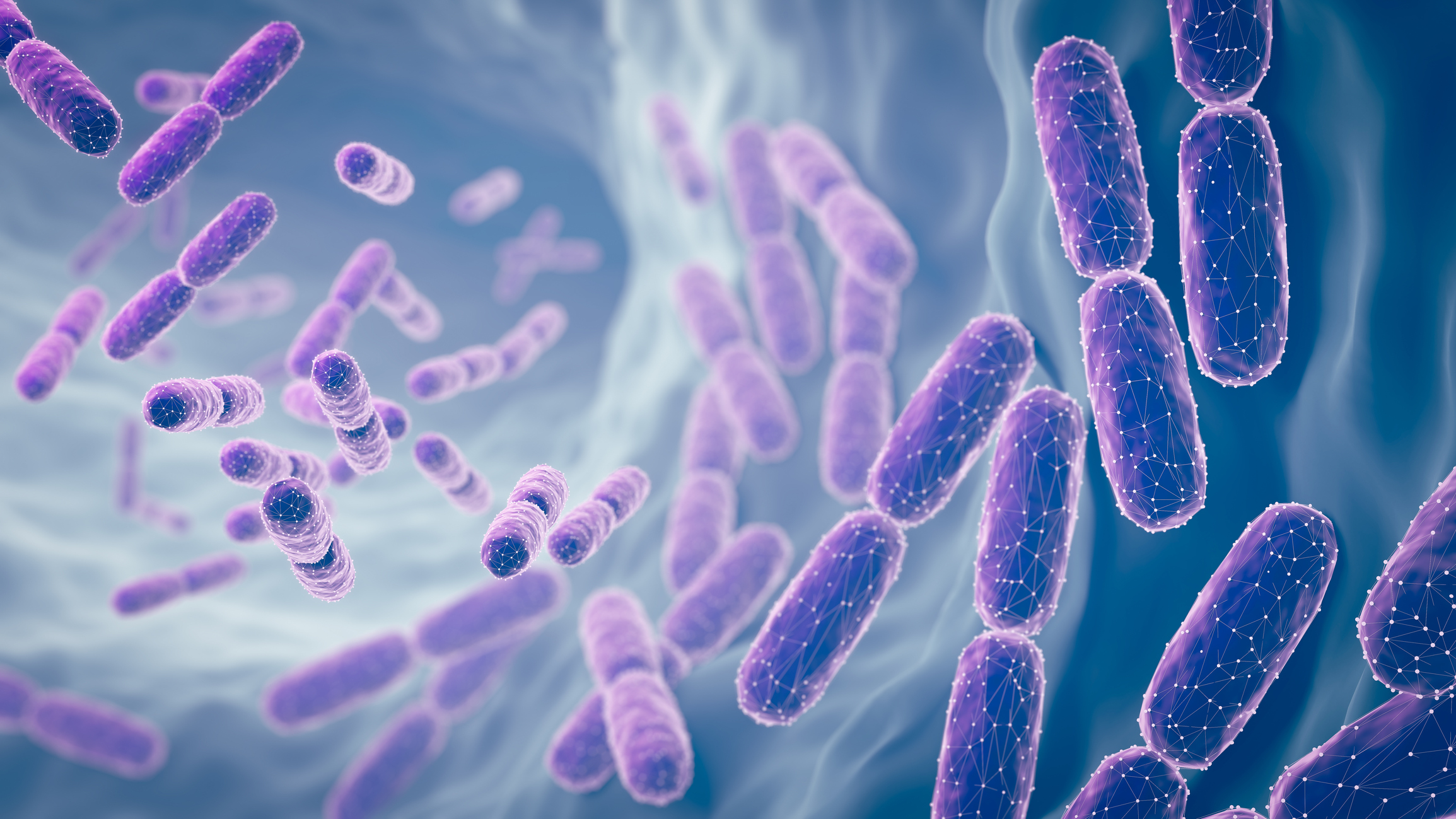The Not-So-Secret Life of Gut Bacteria
Computational modeling gives us a peek inside these important microbial communities

Within our gut live trillions of microorganisms, mostly in the form of dense, organized communities along the intestinal lining. These microbial clusters, known as biofilms, are dynamic ecosystems essential to digestion, immune function and protecting us from disease. Yet understanding how they work has long remained a scientific challenge.
Now, a team of UC Berkeley researchers has developed an advanced computational platform, called MetaBiome, that simulates how different species of gut bacteria grow and interact over time, offering new insights into the microscopic world inside us.
Their study, recently published in the journal mSystems, uncovers the rules that guide how beneficial bacteria establish stable communities and promote gut health.
“Our model allows us to peer inside these complex, microscopic communities, so that we can see how gut bacteria grow, adapt and respond to changing conditions,” said Mohammad Mofrad, the study’s principal investigator and a professor of bioengineering and of mechanical engineering. “We can now begin to better understand the rules that govern their behavior and potentially develop more effective ways to promote gut health and treat disease.”
Using MetaBiome to model these communities is like building a virtual world, where each character is a bacterium, with its own unique traits, behaviors and needs. These characters live inside a virtual gut, where food (nutrients) flows, waste builds up and new microbes are constantly entering the scene. Some bacteria work together, sharing nutrients and helping each other survive. Others compete and push their neighbors out.
Researchers can “watch” as thousands of these digital microbes grow, move and interact — just like a bustling city where every inhabitant’s behavior influences the whole community.
“It’s like programming a miniature society,” said co-lead author Javad Aminian-Dehkordi, a Ph.D. student in Mofrad’s lab. “We can test different scenarios — such as what happens when nutrients change or a new species enters — and see how the community adapts.”
The simulations revealed that teamwork pays off in these communities. “We found that bacteria that help each other by exchanging metabolic products create more stable and well-mixed communities,” said co-lead author Andrew Dickson, also a Ph.D. student in Mofrad’s lab. “And these cooperative bacterial relationships endured even when challenged by environmental changes or the introduction of new bacterial species. This resilience helps explain why healthy gut communities can remain stable over long periods.”
Perhaps one of the most eye-opening findings was related to structure. The researchers discovered that the physical arrangement of gut bacteria is just as important as which species — and how many — are present.
“Well-mixed, cooperative communities appear better at protecting the gut barrier and resisting invasion by harmful bacteria compared to segregated, competitive ones,” said Dickson. “This finding suggests that how bacteria organize themselves spatially and interact could be crucial for gut health.”
The implications of this work are wide-reaching — from improving treatments for inflammatory bowel disease to increasing the effectiveness of fecal transplants and finding new strategies to combat antibiotic-resistant infections.
“By understanding the social rules of gut microbes,” said Mofrad, “we can design smarter ways to help beneficial communities thrive and keep the harmful ones in check.”
In addition to the Berkeley team, Amin Valiei, formerly a postdoctoral researcher in Mofrad’s lab, also contributed to this study.
